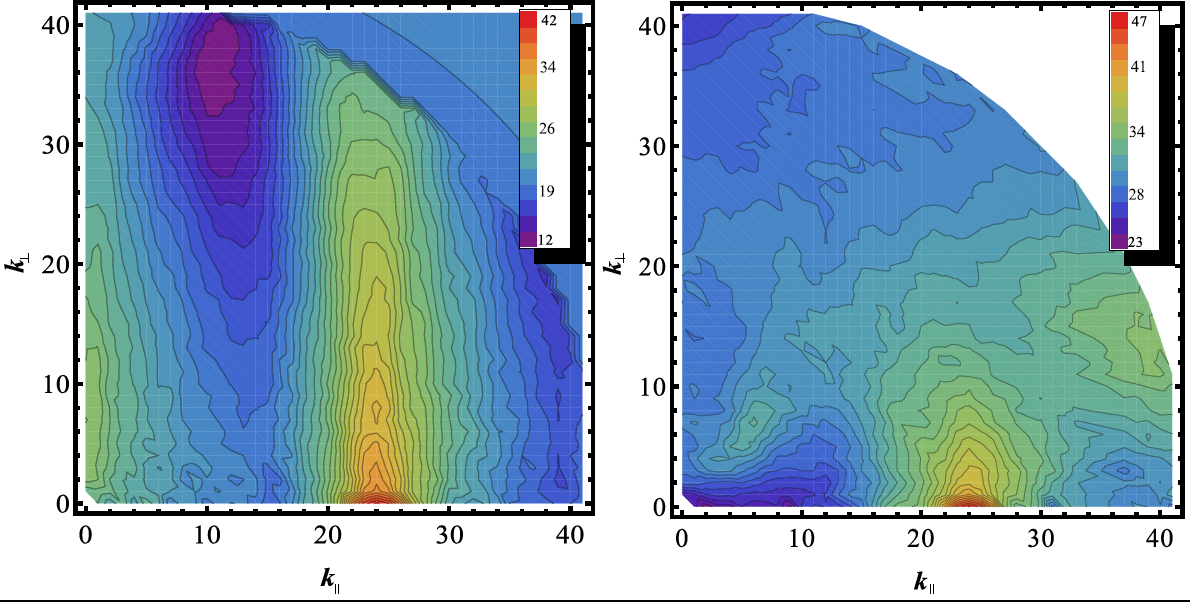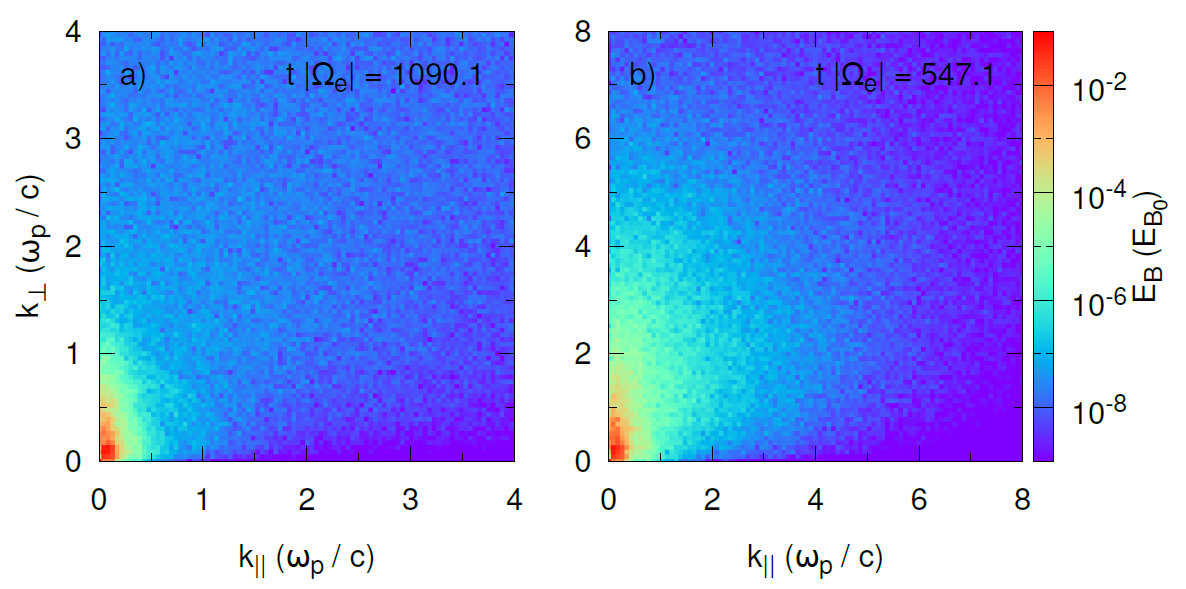Research - Turbulence
Turbulence plays a major role in many areas of space and astrophysics. On large scales turbulence is important for star formation, on smaller scales turbulence contributes to structure formation and plasma heating. Especially for the transport of cosmic rays turbulence plays a vital role.
Turbulence in the context of hydrodynamics is still not well understood after very long time, but at least the Kolmogorov theory exists which allows to understand energy spectra of turbulence. Turbulence in the context of astrophyics however is plasma turbulence on lengt scales spanning many orders of magnitude. This means that various plasma descriptions from magnetohydrodynamics and hybrid models to kinetic models have to be used.
For incompressible nagnetohydrodynamic plasmas, there is the theory of Goldreich&Sridhar, which predicts that the energy spectra have a similar index as in Kolmogorov theory (i.e. 5/3), but the energy transport takes place perpendicular to the magnetic field lines - until a critical balance occurs.
How the Goldreich-Sridhar theory affects plasmas in which energy is injected by particles was discussed in Evolution of plasma turbulence excited with particle beams (Lange and Spanier 2012 Astronomy and Astrophysics ). For this purpose, the GISMO code was used , i.e. the evolution in the field of magnetohydrodynamics was investigated. This shows that high-energy protons excite waves in plasmas, but the energy actually propagates as predicted by Goldreich and Sridhar - perpendicular to the magnetic field line first.

Energy transport in incompressible plasmas: At k=24, energy is injected by flowing protons. The energy is
transported perpendicular to the magnetic field and later - after reaching the critical balance - also parallel.
From: Evolution of plasma turbulence excited
with
particle
beams (Lange and Spanier 2012 Astronomy and Astrophysics )
If one considers the compressible case instead of incompressible MHD plasmas, one finds that both the energy transport as well as the spectra look fundamentally different. In Turbulence evolution in MHD plasmas (Wisniewski, Kissmann, Spanier, and Spanier 2013 Journal of Plasma Physics ) this has been studied in detail. It is not unexpected that there is indeed a more or less isotropic energy energy propagation takes place. However, it also shows that the compressibility is a much greater dependence on the parameters.
My current research is very much concerned with turbulence in the kinetic range - that is, on length scales, where the collisions between particles in the plasma no longer play a role. In these areas, the interaction of individual plasma waves plays an important role. As shown in Three-wave interactions of dispersive plasma waves propagating parallel to the magnetic field (Spanier and Vainio 2008 arXiv e-prints ) this interaction becomes very complicated for dispersive waves such as those found beyond the proton gyrofrequency, very complicated. Also, the wave damping ( Recovering the Damping Rates of Cyclotron Damped Plasma Waves from Simulation Data (Schreiner, Kilian, and Spanier 2017 Communications in Computational Physics ) ) is considerably more complicated.
With Particle-in-Cell Codes it is possible to investigate turbulence in the kinetic range in detail. Even though the technique is relatively easy to understand, the numerical effort is nevertheless extremely large: turbulence is a phenomenon that takes place on many size scales, but PiC codes require a resolution of the smallest scales at the same time. The numerical effort is correspondingly large.

Kinetic simulation of turbulence: Energy is injected at the smallest scales and also spreads out vertically here.
The difference to the image shown above is that this is a kinetic simulation. Accordingly, dispersive wave modes are
also considered here.

 Home page
Home page